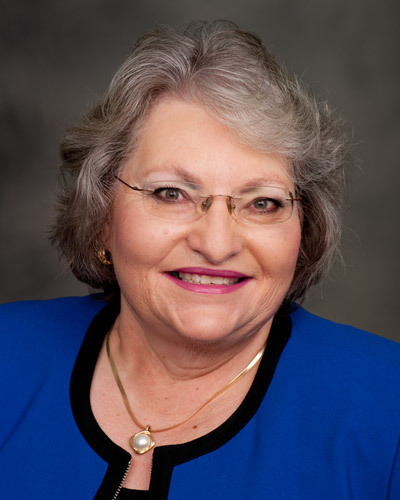
Learning Center
Infusion Therapy Related Complications
-
Register
- Non-member - $325
- Member - $245
This Infusion Nurses Society virtual symposium addresses 5 challenging aspects involved in the delivery of infusion therapy: managing infusion reactions, preserving skin integrity, identifying and intervening with infiltrations and extravasations, and recognizing and managing implanted port complications and competency validation. Registrants will receive 5 Contact Hours and 10 Recertification Units and will have the ability to view anything they miss on-demand. This will be an informative and beneficial conference for all infusion professionals!
-
Contains 3 Component(s), Includes Credits
Competency is a required level of effective performance in the work environment defined by adherence to professional standards, including knowledge, skills, abilities, and judgment based on established science. Due to its invasive, high-risk nature, the clinician with responsibility for VAD insertion, safe delivery of infusion therapy, and VAD management must demonstrate competency with each of these skills as well as with the comprehensive role of infusion nursing. The length of clinical experience and passive recurrent performance are not surrogates for clinical knowledge and procedural competence for experienced clinicians. So how can initial and ongoing competency be validated? In this session, attendees will learn about managing competency assessment and validation in 2 phases: initial competency and ongoing competency.
Competency is a required level of effective performance in the work environment defined by adherence to professional standards, including knowledge, skills, abilities, and judgment based on established science. Due to its invasive, high-risk nature, the clinician with responsibility for VAD insertion, safe delivery of infusion therapy, and VAD management must demonstrate competency with each of these skills as well as with the comprehensive role of infusion nursing. The length of clinical experience and passive recurrent performance are not surrogates for clinical knowledge and procedural competence for experienced clinicians. So how can initial and ongoing competency be validated? In this session, attendees will learn about managing competency assessment and validation in 2 phases: initial competency and ongoing competency.
Lynn Hadaway, M.Ed., RN, NPD-BC, CRNI®
Lynn Hadaway has 50 years of experience in infusion nursing. Her clinical experience comes from infusion therapy teams in multiple acute care settings. She is president of Lynn Hadaway Associates, Inc., an education and consulting company started in 1996. She holds two national certifications—infusion nursing from the Infusion Nurses Certification Corporation and nursing professional development from the American Nurses Credentialing Corporations—as well as a master’s in education from the University of Georgia. She has authored more than 75 published articles and 8 textbook chapters on infusion therapy and vascular access and was the clinical editor for Infusion Therapy Made Incredibly Easy. She served on the Infusion Nurses Society Standards of Practice committees to revise the 2006, 2011, 2016, and 2021 Standards of Practice, and served on the committees to revise the 2014 and 2022 Society for Healthcare Epidemiology of America Compendium (SHEA) CLABSI chapter and the 2015 Association for Professionals in Infection Control and Epidemiology (APIC) CLABSI Implementation Guide.
-
Contains 3 Component(s), Includes Credits
Implanted vascular access devices (IVADs), commonly called ports, are central lines surgically placed in the body to facilitate long-term infusion therapy. Implanted ports differ in construct, size, and application and can be subject to technical difficulties which may lead to patient complications. In this session, learn more about trouble shooting complications and management. Topics include occlusions, malposition, infection, infiltration, and extravasation.
Implanted vascular access devices (IVADs), commonly called ports, are central lines surgically placed in the body to facilitate long-term infusion therapy. Implanted ports differ in construct, size, and application and can be subject to technical difficulties which may lead to patient complications. In this session, learn more about trouble shooting complications and management. Topics include occlusions, malposition, infection, infiltration, and extravasation.
Mary Jo Sarver, MN, ARNP, AOCN, CRNI®, VA-BC, LNC
CEO
Sarver Better Living
Mary Jo Sarver, MN, ARNP, AOCN, CRNI®, VA-BC, LNC, has more than 37 years of experience in infusion therapy and oncology/hematology care. Her role focuses on continuity of care and seamless transitions for patients within and outside the acute care setting. She collaborates and acts as a consultant locally and on a system level for Providence, guiding staff development, competency assessment, and process improvement to improve outcomes in multiple areas of clinical practice and new graduate transition to practice. She attends cancer care conferences, rounds in the clinics and hospital, and actively consults and sees patients and families for treatment and care planning. She has published, conducted research, and spoken on multiple topics within the United States. For decades, passion has prompted her to participate both locally on the Puget Sound Infusion Nurses Society (PSINS), Puget Sound Oncology Nursing Society (PSONS), and American Cancer Society (ACS) boards and to nationally assume various roles through the Infusion Nurses Society (INS) and Oncology Nursing Society) (ONS). She is CEO of Sarver Better Living Products LLC, a family-run company.
-
Contains 3 Component(s), Includes Credits
The inadvertent administration of a solution, nonvesicant (infiltration) or vesicant (extravasation), into surrounding tissue can cause significant patient harm. Despite adherence to policies and procedures for vascular access device (VAD) insertion and care and management during infusion therapy, an infiltration or extravasation may occur. In this session, educational content addresses prevention, assessment, and interventions for infiltration and extravasation.
The inadvertent administration of a solution, nonvesicant (infiltration) or vesicant (extravasation), into surrounding tissue can cause significant patient harm. Despite adherence to policies and procedures for vascular access device (VAD) insertion and care and management during infusion therapy, an infiltration or extravasation may occur. In this session, educational content addresses prevention, assessment, and interventions for infiltration and extravasation.
Barb Nickel, APRN-CNS, CCRN, CRNI®
Barb Nickel, APRN-CNS, CCRN, CRNI®, is a Clinical Nurse Specialist, specializing in critical care and vascular access. Her role includes staff development, quality improvement, and clinical consultation. She has presented nationally and published on infusion therapy. She was chair of the 2024 INS Standards of Practice Committee and is chair of the newly forming 2027 Standards of Practice Committee.
-
Contains 3 Component(s), Includes Credits Recorded On: 03/02/2022
For some patients, maintaining skin integrity is challenging. Many patients receiving infusion therapy have multiple comorbidities, including renal impairment, nutritional deficiencies, hematologic disorders, or cancer. These conditions can impair the skin surrounding the vascular access device (VAD) insertion site, which is vulnerable to being further injured or damaged during VAD insertion, care, and dressing changes. Skin injuries, such as medical adhesive-related skin injuries (MARSI), allergic and contact dermatitis and pressure injuries, often result. Each skin injury increases the risk for infection. In this session, attendees will learn how to identify VAD-associated skin injuries, their prevalence and risk factors, and strategies to ensure the prevention and treatment of these conditions, across dressing selection, application and much more.
For some patients, maintaining skin integrity is challenging. Many patients receiving infusion therapy have multiple comorbidities, including renal impairment, nutritional deficiencies, hematologic disorders, or cancer. These conditions can impair the skin surrounding the vascular access device (VAD) insertion site, which is vulnerable to being further injured or damaged during VAD insertion, care, and dressing changes. Skin injuries, such as medical adhesive-related skin injuries (MARSI), allergic and contact dermatitis and pressure injuries, often result. Each skin injury increases the risk for infection. In this session, attendees will learn how to identify VAD-associated skin injuries, their prevalence and risk factors, and strategies to ensure the prevention and treatment of these conditions, across dressing selection, application and much more.
Amanda Ullman, PhD, RN
Dr. Amanda Ullman is the inaugural professor and chair in pediatric nursing, conjoint between the University of Queensland and Children's Health Queensland, and a 2021-2022 Fulbright Future Scholar. She believes that children should be able to receive medical treatment in hospitals without harm, and her research focuses on improving the most common invasive procedure in pediatrics—the insertion of an intravenous (IV) catheter. This research has changed practice, reducing infection and pain and promoting efficient health care for children internationally, and has received considerable investments by the National Health and Medical Research Council as well as highly-competitive awards, more than 130 research articles, and two mHealth apps. In February 2022, according to ExpertScape, Dr. Ullman ranks as the top global expert in central venous catheters.
-
Contains 3 Component(s), Includes Credits Recorded On: 03/02/2022
All infusion reactions involve the immune system; however, some (anaphylactic) are allergic in nature whereas others (anaphylactoid) are not true allergic reactions. Although reactions can be allergic or nonallergic, the clinical manifestations are the same and require prompt, accurate assessment and management to avoid severe adverse events, including fatality. Content in this session addresses the nurses' role in patient risk assessment, institution of prophylactic measures, administration monitoring, severity grading, management, and follow-up care.
All infusion reactions involve the immune system; however, some (anaphylactic) are allergic in nature whereas others (anaphylactoid) are not true allergic reactions. Although reactions can be allergic or nonallergic, the clinical manifestations are the same and require prompt, accurate assessment and management to avoid severe adverse events, including fatality. Content in this session addresses the nurses' role in patient risk assessment, institution of prophylactic measures, administration monitoring, severity grading, management, and follow-up care.

Mary Alexander, MA, RN, CRNI®, CAE, FAAN
Chief Executive Officer
Infusion Nurses Society (INS)
Mary Alexander, MA, RN, CRNI®, CAE, FAAN, has served as CEO of the Infusion Nurses Society (INS) and Infusion Nurses Certification Corporation, since 1997. She is also editor-in-chief of the Journal of Infusion Nursing, the Core Curriculum for Infusion Nursing, and INS’ textbook, Infusion Nursing: An Evidence-Based Approach. In addition, Mary represented INS on the panel that revised the Centers for Disease Control and Prevention Guidelines for the Prevention of Intravascular Catheter-Related Infections, in 2011. She speaks globally on topics such as the benefits of the specialty practice of infusion nursing, the development of standards of practice, and improving patient safety.

Wendy Vogel, MSN, FNP, AOCNP®
Oncology Nurse Practitioner
Advanced Practitioner Society for Hematology and Oncology
Wendy H. Vogel, MSN, FNP, AOCNP®, is an oncology nurse practitioner from Kingsport, Tennessee. She received her BS in nursing at Tennessee Technological University and her MS in nursing in the Family Nurse Practitioner Program at East Tennessee State University. Ms. Vogel is a board-certified advanced oncology certified nurse practitioner through the Oncology Nursing Certification Corporation and a certified family nurse practitioner through the American Nurses Credentialing Center.
As well as being the executive director and a founding board member of the Advanced Practitioner Society for Hematology and Oncology (APSHO), Ms. Vogel is an associate editor of the Journal of the Advanced Practitioner in Oncology (JADPRO) and has published in several professional journals and texts. She received the 2012 ONS Mary Nowotny Excellence in Cancer Nursing Education Award as well as the American Journal of Nursing Book of the Year Award for coediting the Advanced Oncology Nursing Certification Review and Resource Manual: Instructor’s Resource. She has lectured nationally and internationally on oncologic topics and the role of the advanced practitioner.
-
Contains 1 Component(s)
Please complete the meeting evaluation to receive your continuing education certificate. Your feedback is important, as it helps INS better serve you and the membership. We need your input to continue to provide you with quality programs.
Please complete the meeting evaluation to receive your continuing education certificate. Your feedback is important, as it helps INS better serve you and the membership. We need your input to continue to provide you with quality programs.
